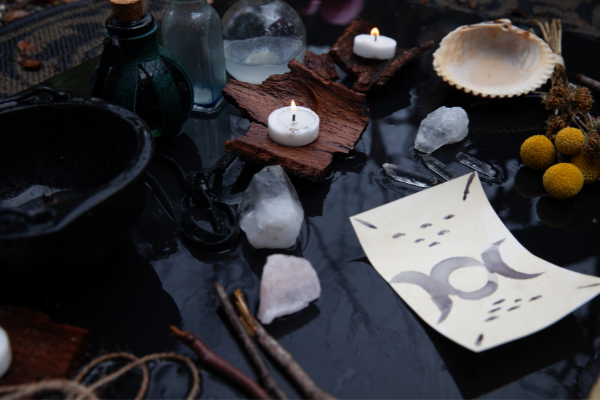
How Do We Absolve Women From Witchcraft?
- Category: Gender
- Date 14-08-2005
- 639 views
Whenever a malicious witch is mentioned, the image of a woman comes to mind: a subject of blame, ridicule and victimisation. While witchdoctors are usually men whose work apparently is to mitigate certain unfavourable conditions, nearly all those who fall under suspicion of witchcraft are women, evidently regarded by witch-hunters as especially susceptible to the devil’s blandishments. Yet, many accusations of malicious witchcraft have often proved to be unfounded, as they tend to spring from irrational fears and social anxieties, although many communities and individuals tend to regard almost every misfortune as a result someone’s bad intentions and dirty activities.
Recently, Kalebi Goha of Dodoma killed his 50year old grandmother, Mtetemi Salum, accusing her of bewitching him. His health had been ailing for sometime, therefore he slashed the old lady dead with a machete, before police apprehended him to face murder charges. (See: Man held over killing The Citizen 6th July 2005, page 2)
By killing the suspected witch, Goha must have been hungry to revenge or improve his health by eliminating his perceived enemy. If he was a Christian, he might have found a favourable command in Exodus 22:18, “You shall not permit a witch to live”– an injunction against witchcraft formerly used to justify the persecution of witches in medieval Europe.
The sense of hostility against witches is not really new. In the early Christian centuries, the church was relatively tolerant of magical practices whereby those who evidently engaged in witchcraft were required only to do penance. But during the 13th and 14th centuries, opposition to alleged witchcraft hardened as a result of the growing belief that if any magic or miracles did not come from God, they came from the Devil and were thus manifestations of evil. Therefore those who practiced simple sorcery, such as village wise women, were increasingly viewed as individuals in league with Satan.
In those years, witch-hunting was commonplace in Europe as well, with professional witch finders being paid to identify and test suspects for evidence of witchcraft. For instance, a woman would be thrown into a body of water; if she sank, she was considered innocent, but if she stayed afloat, she was guilty. The persecution of witches declined about 1700. When belief in diabolical witchcraft was already declining in Europe, one of the last outbreaks of witch-hunting took place in colonial Massachusetts in 1692 whereby twenty people were executed in the wake of the Salem witch trials, which took place after a group of young girls became hysterical while playing at magic and it was proposed that they were bewitched.
Witchcraft is not yet a thing of the past; moreover it is not necessarily bad. Belief in traditional witchcraft, in the sense of sorcery, remains alive in India, Africa, Latin America and the possibility of something akin to diabolical witchcraft can still be found among some conservative Christians, in pursuit of miracles. Witchcraft is believed to force results, worked by simple and ordinary means. Simple sorcery, such as using charms, can be found in almost all traditional societies, exhibited through sophisticated arts of alchemists and ceremonial magicians.
Sociologically witchcraft or sorcery, usually in peasant communities, serves to reinforce beliefs about the supernatural world and the relation of humans to that world. Psychologically, it provides a means of establishing a sense of control over nature and thus influences the conditions caused by disease, uncertain seasons, and natural disasters. When such eventualities occur despite preventive measures, they can be interpreted as the result of malicious witchcraft, which invites pestilential spirits. The alleged perpetrators are then sought out and brutally eliminated from the community, as was Mtetemi’s case.
The positive or negative attitudes about witchcraft are said to be generally coloured by superstition – a belief or practice generally regarded as irrational and as resulting from ignorance or from fear of the unknown. It implies a belief in unseen and unknown forces that can be influenced by objects and rituals. In general, superstitious practices and beliefs are most common in situations involving a high degree of risk, chance, and uncertainty, and during times of personal or social stress or crisis, when events seem to be beyond human control. To the unbelievers, all religious beliefs and practices in Christianity, Islam and etcetera, may seem as superstition, while religious leaders often condemn unorthodox popular practices as a superstitious parody of true faith.
In a nutshell, all the women who live in the shadow of ostracism or death by lynching or any other brutal means are mere scapegoats of our collective blindness and uncertainty about the natural order of things. When things go wrong, we look around for another person to blame, and inevitably the woman is the victim.
By Venansio Ahabwe
Source: Peering Eye, Sunday Citizen
